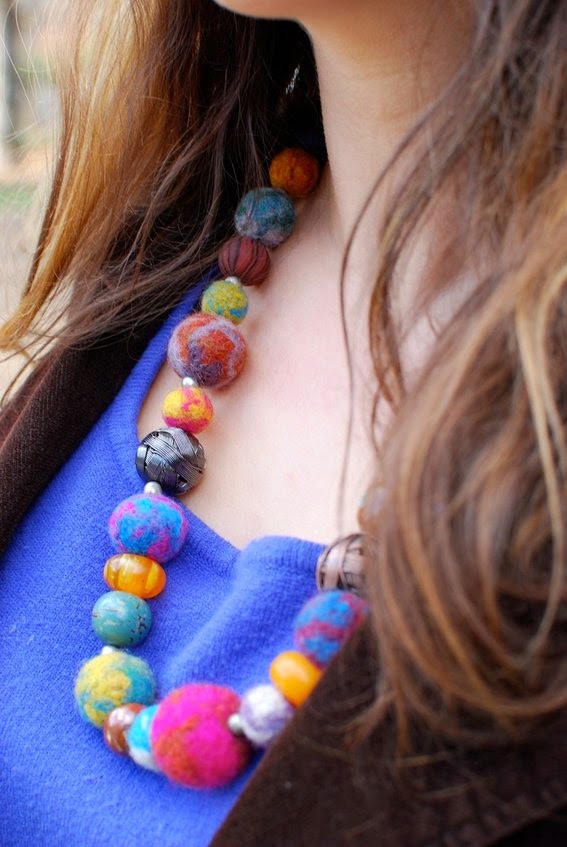Clothes Scramble!
 Second hand shops are great. Clothes scrambles are pure genius! Thank god for impulse buys and changing tastes! I had forgotten that there was one on today and when I figured it out I was so happy. My little brother just happened to snap a picture of my face at that moment of joy...
Second hand shops are great. Clothes scrambles are pure genius! Thank god for impulse buys and changing tastes! I had forgotten that there was one on today and when I figured it out I was so happy. My little brother just happened to snap a picture of my face at that moment of joy...
This clothes scramble had a small donation fee for two very good causes (SPCA and Sweet Louise). And yay! Clothing!
Polymer Necklaces
So I want to have a look at what gives a polymer different properties and not just whether it is a Thermoset or a Thermoplastic. If you do want to review that and what a polymer and a Mer are you can view my previous blog post here http://math-machines-and-playing-pretend.blogspot.co.nz/2014/07/measure-for-measure-thermosets.htmlRemember last time we compared polymer strings to beaded necklaces? Well we're going to use that analogy and develop it a little further to have a look at the properties of a chunk of polymer.
Here's three terms to add to your vocabulary of smart sounding stuff:
Intramer Structure: This is the structure of the Mer itself. This refers to how the Mer structure is made up of chemical elements. Think of this as what the bead is made out of and how it is designed to be connected to the necklace.
Intramollecular Structure: (notice the "a") This is the way Mers combine to form polymer chains. If you want you can think of this like the string or the links between the beads.
Intermollecular Structure: How the chains interact with each other. Remember how previously we talked about Van Der Wal and covalent bonds and related them to tangles in the beads strings and perhaps a splash of superglue.
 A really really important property of a polymer is its flexibility or rigidity. Take a look around you right now and find a plastic thing. Now ask yourself how absolutely useless this thing would be if that thing had different flexibility properties. The thing closest to me is one of those dog ball thrower things. Although not disastrous without it, a little bit of flexibility is good for this as it provides a bit of spring when throwing a ball. Even though it's a pretty trivial object, someone would have thought this through and intentionally chosen a polymer to balance price and stiffness.
A really really important property of a polymer is its flexibility or rigidity. Take a look around you right now and find a plastic thing. Now ask yourself how absolutely useless this thing would be if that thing had different flexibility properties. The thing closest to me is one of those dog ball thrower things. Although not disastrous without it, a little bit of flexibility is good for this as it provides a bit of spring when throwing a ball. Even though it's a pretty trivial object, someone would have thought this through and intentionally chosen a polymer to balance price and stiffness.When we say that a plastic is flexible what we literally mean is that its polymer chains can be easily slid over each other without causing permanent damage to the structure of the object. The three structure types that were introduced enough each have an effect on the flexibility. The Intramer structure has the greatest effect and the Intermollecular structure has the smallest effect. Let's examine them one by one...
Intramer structure: This is mostly determined by the atoms that make up the Mers. All atoms within molecules are joined to the other atoms by strong covalent bonds. Depending on the type of atom there can be single bonds or double bonds (in other cases I'm pretty sure there can be more as well). Bulky side groups can also form, an example of this can be seen below. Along with double bonds they are fantastic at making a polymer more rigid. If you're having trouble picturing how those two things can limit a polymers flexibility, Imagine trying to slide a rigid and spiky surface across another rigid and spiky surface. Yeah.
Intramollecular Structure: Different types of plastics form different lengths of polymer chains. And in this case, size matters. Imagine getting a whole bunch of necklace strings as big as your little finger and stirring them around in a bucket. Now Imagine getting another bucket, filling it with necklace strings a meter long and giving that a super long stir. Which bucket of necklaces is going to be the easiest to detangle? It's clear to see that when the average length of the polymer string goes up (and hence the molecular weight) the stiffness of the material will also increase.
Intermollecular Structure: It's all about the Van Der Wal bonds!! When in liquid form, the polymer strings are able to move around like wriggling worms. By really really quickly cooling the polymer down (or quenching it) you can freeze the wriggling worms mid wriggle. But if you cool the polymer down slowly then the worms will line up to form a crystalline structure which looks a little bit like zebra stripes. Take a look at the difference between these two structures...
Look how much more dense the polymer strings in the crystalline structure are! Because of this density the Van Der Waal bonds (which act between two polymer strings) will have more of an effect, they're a little bit like magnets because they pull more strongly when they are closer to another polymer string. And hence the material is also made stiffer by allowing the plastic to slow cool!!



No comments:
Post a Comment